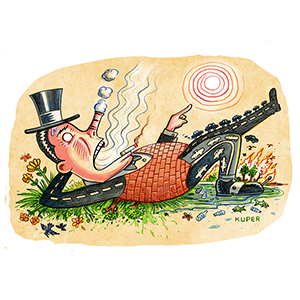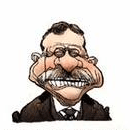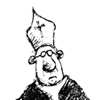How 19th-century Spiritualists ‘canceled’ the idea of hell to address social and political concerns
Published in News & Features
Between Columbus and Cincinnati, Ohio, drivers pass a billboard on Interstate 71 that has achieved some internet fame.
Since 2004, a black sign has risen from this flat stretch of highway declaring “HELL IS REAL.” The H in “Hell” is painted in red, a color Christians have long associated with sin and Satan.
The developer who erected the warning, Jimmy Harston, has similar signs scattered across the Midwest, including ones that ask, “If you died today, where would you spend eternity?”
For years, this confrontational sign was mostly a local attraction. But it gained wider notoriety when Ohio’s two Major League Soccer teams, Columbus Crew and FC Cincinnati, dubbed their 2017 matchup “Hell is Real.” The sign has now spawned TikTok content, T-shirt designs, mugs and decals. But it also reflects a genuine belief in hell held by a majority of Americans today, though the numbers are slipping.
A 2023 Gallup poll found that 59% of respondents believe in hell, while 67% believe in heaven. The numbers for hell belief are far higher among those who identify as Protestant Christians (81%) and Republicans (79%).
Hell belief is holding steady in the U.S., but this was not always the case. In my research on spirit communication in 19th century American culture, I have found an organized effort to “cancel” hell by Spiritualists, who made up the fastest-growing religious movement of the century.
Spiritualists believed that people could maintain communication with the living even after death. They thought communicative spirits had a principal role to play in addressing the era’s most pressing social and political concerns, which would be impossible if souls were damned. This idea was a cornerstone of their practice and a driver of their politics.
Many traditions, including Catholic Christianity, have beliefs about eternal destiny, but Protestant beliefs predominated in America’s settler colonies.
Puritan minister Michael Wigglesworth’s epic and best-selling poem “Day of Doom,” written in 1666, scared generations of believers with its vivid depiction of “yonder Lake,/where Fire and Brimstone flameth.”
A century later, revivalist minister Jonathan Edwards warned of the “dreadful pit of the glowing flames of the wrath of God” awaiting the unrepentant.
...continued













Comments